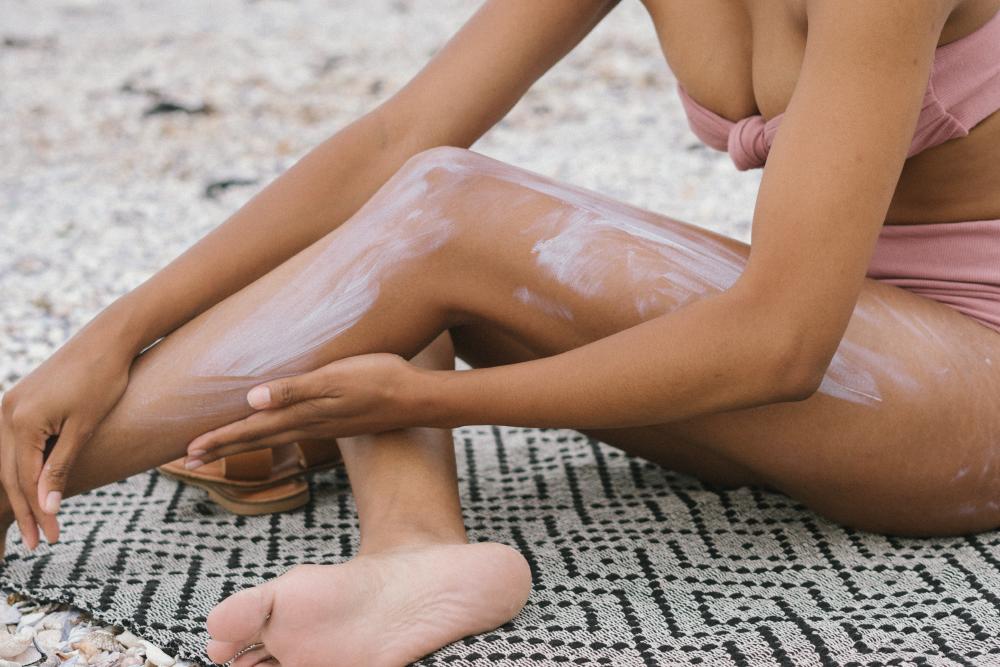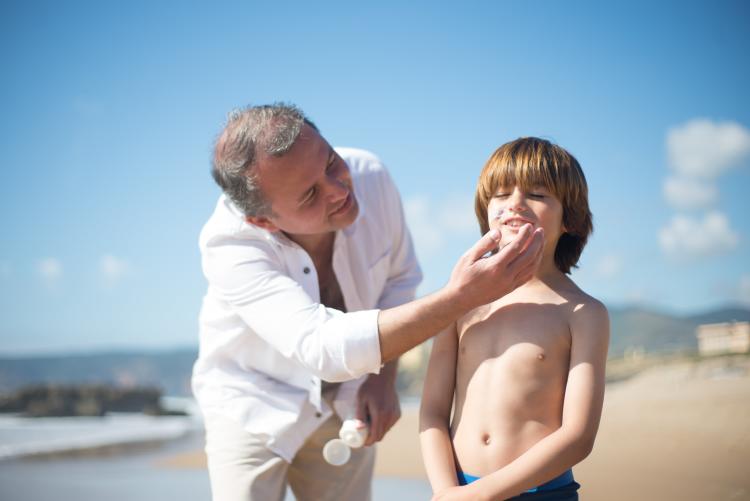
Sunscreens have been in everyone´s mouth the past year. We are being more conscious of the damage that our skin may suffer due to sun exposure. But how does sunscreen work? Are you aware of the different types of sunscreen? Such as physical blockers or chemical absorbers. Understanding the possible damage of sun on our skin can led to thoughtful decisions when buying sunscreen. Is sunscreen bad for you? Those questions and more will be answered in the next paragraphs. Check this complete guide to be an expert on it :)
Are sunscreens bad for you? Not at all! Sunscreens are responsible for protecting our delicate skin from the sun. When you go to a pharmacy you can find them in the skin care products rack. Sunscreens are made of active ingredients that end up protecting our skin cells from the ultraviolet radiation of the sun. That radiation is composed of:
UVA rays (ultraviolet A): They are linked to skin aging.
UVB rays (ultraviolet B): They are associated to skin burning.
UVC rays (ultraviolet c): These rays do not reach the earth´s atmosphere because they are absorbed by the ozone layer. They are the most harmful rays.
Those rays can led to skin cancer, skin burning and skin aging. The most important thing to do is prevent those damages at all cost! Luckily, sunscreens exist to save us from that :) Sunscreens can be made in three different ways: by combining chemical ingredients or physical active ingredients, or a combination of both to prevent UV damage in our skin. We will explain more about them later.
We can find sunscreens in different formulas: sprays, gels, sticks, lotions, powders and oils. The variety available in the market allows skin protection for everyone. Here you can find 10 Sun Protection Food You Should Include in Your Diet :)
As I mentioned before, sunscreens can be made in three different ways. In all of them, the presence of chemical ingredients or physical active ingredients is present. Let´s see how sunscreens work!

To continue answering how does sunscreen work? We need to learn what FPS stands for below. The first thing that comes to our mind when thinking of sunscreen is the different types of protection available in the market. SPF stands for "Sun protection factor".
To answer to our question, there is a difference between 30 SPF and 50 SPF. The higher the number, the stronger the sun protection on our skin. Dermatologist recommend using the higher protection because we do not tend to apply it correctly on your body and our face. To compensate that incorrect coverage, sunscreens with SPF 50 are the best choice :) It is incredible to learn how sunscreens work!
Lately, there has been a campaign of sunscreen in social media. Are sunscreens bad for you? Not at all! Cosmeticians recommend applying two fingers of sunscreen on our face. That is the ideal measure of sunscreen needed to completely cover our face. I tend to apply in as soon as I wake up so I don´t forget :) Using sunscreen is great, but unless you apply it every two hours it won´t protect your skin at all. Set an alarm on your phone and reapply it!

Sunscreens are not bad at all for your skin or body. How does sunscreens work? There is scientific evidence that supports they results in preventing skin cancer damage and skin aging. In the United States, skin cancer is the most common cancer. According to the American Academy of Dermatology, one in five Americans will develop skin cancer in their lives. That´s why sunscreens are very important. How does sunscreens work? The skin cancer foundation states that sunscreens decrease strongly the risk of skin precancers and skin cancers.
Do you want more evidence to know that sunscreens AREN´T bad for you? Skin cancer foundation also explains that a regular daily use of sunscreens SFP 15 can reduce the risk of developing melanoma cancer by 50 percent and squamous cell carcinoma by 40 percent. Protecting your skin and saving your life takes you less than 5 minutes on your morning routine :)
Apart from the evidence of renowned sites, all sunscreens are tested in laboratories and by dermatologists who end up approving their use. They undergo lots of tests to be safe for humans.
EVERYONE should use sunscreens! From babies from six months on to older people. There is a myth going around that you should only use sunscreen when you are exposed to sun. But that´s far from being true! If you live in a house with big and open windows or you work next to one you should use sunscreen too. UVB and UVA rays impact everywhere, indoors and outdoors :)
The good thing would be using sunscreens since we are babies, but if that is not the case, it is never late to start incorporating it into your lifestyle. How does sunscreens work? Babies should use sunscreen from 6 months on. Under that age, they should not be exposed to the sun because their skin is very sensitive. You can buy sun-protective clothing online that will cover their body and stop UV rays from entering into their cells. Remember to keep them in cool areas away from the sun :)
As I mentioned before, it is good to use your two fingers to apply sunscreen on your face. That measure will be enough for your face. Regarding your body, dermatologists recommend applying one ounce of sunscreen on your body. Another measure is one teaspoon for each leg, arm, body back and more. Your neck and hands should be covered too!

In this article we have explained how does sunscreens work? Are sunscreens bad for you? All that information will help you to be more conscious about sun exposure and luckily you will make changes in your daily routine. The complete guide to become an expert on it consists of: the purpose of sunscreens, difference between SPF 30 and SPF 50, myth of sunscreens, who should use sunscreens and five reasons to use it regularly :)
How much screen is needed? That is also answered in this guide!